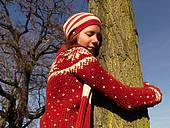
Generalizations about generations are generally unwise, however, there is some evidence that Millennials may not be as green as we thought. According to Mintel women aged 35+ “are generally more green than their younger brethren, suggesting that values change with age, marriage, and children.” Interest in recycling and buying recycled products increases with age, income and education. Mintel speculates that price sensitivity may overcome green impulses among younger age groups
More clues as to Millennials’ attitudes toward buying green comes from a new report from Outlaw Consulting. Outlaw surveyed 100 of its most forward trendsetter panelists living in New York, Los Angeles, San Francisco, and Miami, asking them for a list of their favorite “green brands” – that is, companies they like and see as making efforts to help the environment. They also asked them what these companies were doing to be green, and why it resonates. The brands they listed tended to be green category leaders (Toyota), minimalist in design (Method, Apple), or contributing to the conversation (Honest Tea). Trendsetters are the first to admit not all of their purchases are green. Sometimes they insist on hunting down the greenest product on the shelf, and sometimes they don’t even think about it. So when does “green” become an issue? According to many trendsetters, it depends on the category.
Anything they personally ingest – i.e. what they eat, drink, and breathe – gets foremost priority on the green issue. “I definitely try to make green choices for anything going on or in my body.” This includes food, obviously, but also beauty items and cleaning products. “Living in a small apartment, I feel it’s very important to choose cleaning products that aren’t harmful to breathe.” Green products in these categories allow consumers to feel they are doing a favor to the environment and their own bodies.
More external consumer categories, such as technology and clothing, are much lower on their green priority list. “To be honest, in terms of clothing, my sense of ecology kinda goes out the window. If I see something cute, I’ll buy it.” However, this is also because unlike food and home care, these categories present them with little choice. Green technology products are almost unheard of, while eco-friendly clothing tends to be expensive or unfashionable (“it’s all crunchy looking,” as one trendsetter described it).
When green options become readily available in more categories, it seems likely that trendsetters will become more discerning. But for right now, the hot green shelves are food, beauty and home care.

